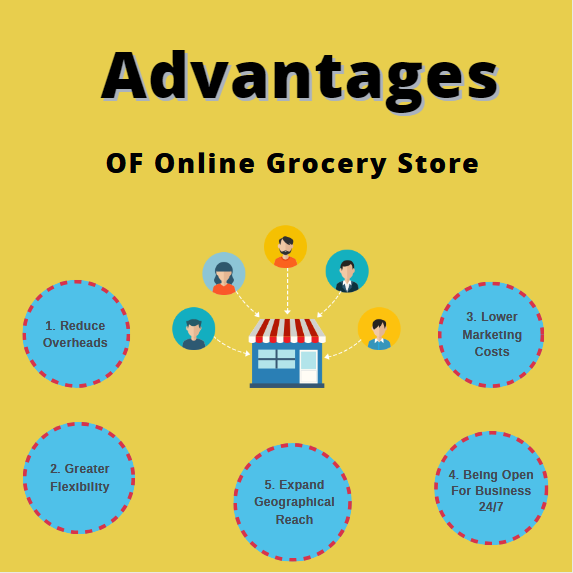Ecommerce Advertising And Marketing Tips to Drive More Website Traffic and Sales
Ecommerce Advertising And Marketing Tips to Drive More Website Traffic and Sales
Blog Article
A Comprehensive Overview to Why This Trend Is Reshaping Customer Habits and the Diverse Products That Are Altering Hands Online
In today's quickly evolving marketplace, the merging of customization, sustainability, and technological development is substantially changing consumer habits. As younger generations progressively prioritize ethical considerations and tailor-made experiences, brand names are adjusting their approaches to meet these assumptions. This transformation is not just a fleeting trend but an extensive change that is affecting the sorts of items exchanged in the digital world. Understanding the hidden factors driving this change is essential for companies aiming to grow in this brand-new setting, motivating a closer evaluation of the ramifications for both customers and brands alike.
Key Elements Driving Adjustment
Increasingly, consumer habits is being shaped by a confluence of essential factors that drive considerable adjustment in the industry. Among the most pivotal impacts is the fast innovation of innovation, which has transformed how consumers accessibility information and make buying choices (Ecommerce). The proliferation of smart devices and social media sites platforms allows consumers to take part in real-time interactions, resulting in even more educated options and increased assumptions for customization
Additionally, demographic changes, consisting of the rise of millennials and Generation Z, are redefining market characteristics. These generations prioritize experiences over material products and seek brand names that line up with their values, such as openness and credibility. This change obliges companies to adapt their methods to reverberate with these conscious consumers.
Additionally, the effect of globalization can not be neglected. With the capability to shop throughout borders, consumers are revealed to a larger array of products and brands, fostering an affordable atmosphere where quality and customer support end up being paramount. With each other, these elements develop a complex landscape that compels services to be dexterous in their approach, guaranteeing they fulfill the developing needs of a varied and educated consumer base.
The Surge of Lasting Products
How can brands successfully react to the expanding consumer demand for sustainable products? To navigate this shift in consumer behavior, brand names must focus on openness and authenticity in their sustainability initiatives. This entails offering clear info regarding sourcing, making processes, and the general lifecycle of products. Brands can utilize accreditations, such as Fair Profession or natural tags, to build trust and reliability with eco-conscious consumers.
Furthermore, development in product style and products is essential. Companies are significantly taking on eco-friendly, recycled, or upcycled products to lower ecological impact. This not only interest consumers' choices but additionally settings brand names as leaders in sustainability.
Participating in area initiatives and supporting ecological reasons can additionally enhance brand loyalty. Consumers are extra inclined to sustain brands that actively add to sustainability initiatives and show social duty.

Customization in Buying Experiences
Customization has actually ended up being a crucial aspect in enhancing buying experiences, as consumers increasingly look for customized communications that reverberate with their individual preferences. This shift is driven by the expanding expectation for brands to understand and provide to special client demands, which has led to ingenious strategies in retail.
Ecommerce systems now use innovative formulas that assess searching history, acquisition habits, and go to these guys demographic details to curate customized product recommendations. These customized experiences not only raise user interaction but likewise foster brand name loyalty, as clients are find more info most likely to return to systems that give pertinent tips.
In addition, customization extends beyond item recommendations; it encompasses targeted advertising techniques, tailored e-mail projects, and customized internet experiences. Brands that harness the power of information analytics can produce an extra seamless and delightful shopping experience. For instance, dynamic rates designs and individualized price cuts can substantially boost client satisfaction, as they reflect an understanding of individual acquiring actions.
Eventually, the focus on customization in purchasing experiences stands for an essential change in consumer actions. As brands proceed to adjust to these advancing expectations, the capacity to provide personalized interactions will be critical for preserving affordable advantage in the retail landscape.
Effect of Social Network Trends
The rise of customization in buying experiences has actually been considerably influenced by social media sites fads, as platforms come to be central to customer involvement and brand name communication. Social network enables brand names to gather extensive data regarding consumer preferences, habits, and communications, which educates individualized advertising and marketing strategies (Ecommerce). This data-driven approach allows services to customize their offerings, enhancing consumer satisfaction and loyalty

Social media site also cultivates community among consumers, encouraging conversations around products and brands. This feeling of belonging influences acquiring choices, as customers are a lot more likely to purchase products supported by their peers or communities. In addition, user-generated content, such as reviews and reviews shared on social systems, substantially influences brand name understanding and trust.
The Future of Online Consumer Actions
What will the future hold for on the internet customer habits as innovation remains to advance? Increasingly, customers are expected to focus on customization and benefit in their on the internet next shopping experiences. As expert system and artificial intelligence technologies development, retailers will certainly harness data analytics to develop customized buying experiences, anticipating consumer demands and preferences a lot more properly than ever previously.
Moreover, the increase of immersive innovations, such as increased reality (AR) and online reality (VR), will redefine item communication. Customers will certainly be able to envision items in their own settings before purchasing, therefore decreasing unpredictability and boosting satisfaction.
Sustainability will also play a vital role in shaping future consumer behavior. As awareness of environmental concerns grows, consumers are most likely to prefer brand names that demonstrate dedication to sustainable practices, affecting acquiring choices and brand name commitment.
In addition, the combination of voice commerce and clever home tools will improve the acquiring procedure, making purchases more available. In this developing landscape, services must adjust to these changes, concentrating on advancement and consumer interaction to continue to be competitive (Ecommerce). The future of on the internet customer behavior promises to be vibrant, driven by technological advancements and changing consumer values

Conclusion
The continuous change in consumer behavior is considerably influenced by the merging of customization, sustainability, and technical improvements. As brand names adapt to meet the demands of millennials and Gen Z, the emphasis on tailored experiences and ethical sourcing becomes progressively pronounced. The combination of social media additionally amplifies these adjustments, cultivating area interaction and shaping buying decisions. The advancement of the on the internet industry continues to mirror these shifting dynamics, proclaiming a brand-new period for customer interactions and product offerings.
Report this page